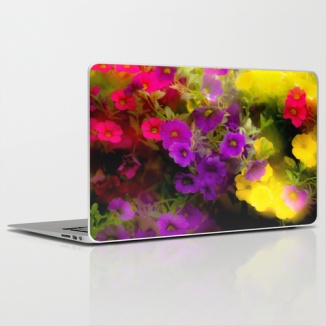If you guessed secret answer ‘C’, Both, you’re correct. Above are the photos used to create the two HDR photos in my post “Thoughtful Thursday ~ HDR or Not?”. How can both be HDR? The answer is in the purpose of HDR and how it’s used.
The dynamic range of a camera, or more correctly a specific camera system/setup, in practice, is the number of stops in which the system is capable of resolving detail from dark to light. Film has generally been considered to have a dynamic range of 5 stops. Digital cameras can vary from 5 stops and depending on who you talk to and how much math you want to get into, they can can be about 6-8 stops. The human eye can see more than 20 stops.
Ok, now in English.
- Select a scene you want to photograph
- Using a spot meter, in-camera or handheld, meter the darkest part of the scene where you want to see at least some detail
- Using the same spot meter, meter the lightest part of the same scene where you want to see some detail
- Compare the two readings
If those two exposures are more than 5 stops apart there is a good chance you will not have detail in both the darkest and the lightest areas of the photo.
Example:
- Your dark area meter reading is 1/60th @ f/8
- Your light area meter reading, keeping the f/8, needs to be 1/2000th or slower. Anything faster and you start entering the “HDR zone“.
HDR allows you to increase that 5 stop range by any amount you want. The technique is pretty simple really. Mounting your camera on tripod makes things easy, but with today’s software it’s not completely necessary. (I did not use one with these photos.)
However you decide to hold the camera, the next step is to take at least two photos of the same subject (more is better because you have more control over the final results), one set to expose for the darkest parts of the scene and the other to expose for the lightest parts. When I say to “expose for”, that does not mean you use the meter readings you just took. Don’t forget, all light meters will meter for “middle gray”. So, when you expose for the dark area you want to increase your exposure. For your light areas, you want to decrease the exposure. Since you’re going to use an HDR technique, you can increase your exposure by whatever it takes to get the amount of detail you want in the dark areas and decrease the exposure as much as necessary to get the detail you want in the light areas. The next step is to combine the photos so the result shows details in the dark and the light.
For “Demolished Buidling_01” I used a trial version of software that had a lot of wizards and controls etc. Specialized HDR software gets used quite a bit and is the reason we see so many of these “grittier” or “cartoony” versions of HDR photos. It makes it very easy to create this type of artwork using something called “tone mapping”. I will not even attempt to get into that one.
For “Demolished Building_02” I used Photoshop, but I did not use the built-in HDR function. I wanted a more realistic look to the final photo, something more like the human eye sees without even thinking about it. I added the photos into one file, each on a its own layer. It took a lot of work with masks, brushes and blending modes, but I got the result I wanted. I had actually done this version before trying HDR software, which is why I tried HDR software. While exploring the trial software I was able to create an HDR version that was indistinguishable from the version I made in Photoshop. The process with the trial software took about 5 minutes. I don’t use Photoshop for HDR any more.
I’m hoping I haven’t been too vague on the explanation of all this. If you have any questions, please post a comment so others can see your questions and my answers.
~ Daniel Kmiecik









